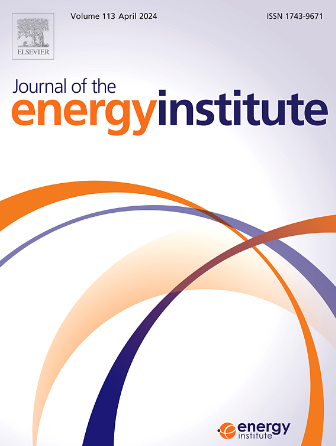Optical diagnosis on combustion characteristics and flame development process of Fischer-Tropsch diesel/biodiesel blends
IF 5.6
2区 工程技术
Q2 ENERGY & FUELS
引用次数: 0
Abstract
Taking advantage of the complementary physicochemical properties of biodiesel and Fischer-Tropsch (FT) diesel, the use of FT diesel/biodiesel blends can potentially overcome the limitations of biodiesel and improve engine performance. In this study, the combustion and flame development characteristics of FT diesel/biodiesel blends at different loads and injection pressures were investigated on an optical engine. The results show that blending FT diesel with biodiesel reduces ignition delay (ID), improves fuel atomization, and increases indicative thermal efficiency by 2 %–4 % at 50 % FT diesel blending ratio (FT50) compared to pure biodiesel. At low and middle loads, blending FT diesel with biodiesel decreases fuel-bound oxygen concentration, increasing in-cylinder temperature and promoting soot generation. At high load, blending FT diesel with biodiesel promotes fuel atomization and evaporation, which restrains soot generation. Furthermore, increasing injection pressure can reduce local fuel-rich zones, and increase the combustion speed and thermal efficiency while suppressing soot generation. The greater the proportion of FT diesel, the more obvious its improvement in combustion. Specifically, FT50 increases indicative thermal efficiency by 2.3 % at an injection pressure of 140 MPa compared to 80 MPa.
对费托柴油/生物柴油混合物燃烧特性和火焰发展过程的光学诊断
利用生物柴油和费托(FT)柴油互补的物理化学特性,使用费托柴油/生物柴油混合物有可能克服生物柴油的局限性并改善发动机性能。本研究在光学发动机上研究了不同负荷和喷射压力下 FT 柴油/生物柴油混合物的燃烧和火焰发展特性。结果表明,与纯生物柴油相比,调和比例为 50%(FT50)的调和柴油可减少点火延迟(ID),改善燃料雾化,并将指示性热效率提高 2%-4%。在低负荷和中负荷时,将 FT 柴油与生物柴油混合会降低燃料中的氧气浓度,从而增加缸内温度并促进烟尘生成。在高负荷下,将矿物柴油与生物柴油混合可促进燃油雾化和蒸发,从而抑制烟尘的产生。此外,增加喷射压力可以减少局部富油区,提高燃烧速度和热效率,同时抑制烟尘生成。FT 柴油的比例越大,对燃烧的改善越明显。具体而言,在 140 兆帕的喷射压力下,FT50 的指示性热效率比 80 兆帕提高了 2.3%。
本文章由计算机程序翻译,如有差异,请以英文原文为准。
求助全文
约1分钟内获得全文
求助全文
来源期刊

Journal of The Energy Institute
工程技术-能源与燃料
CiteScore
10.60
自引率
5.30%
发文量
166
审稿时长
16 days
期刊介绍:
The Journal of the Energy Institute provides peer reviewed coverage of original high quality research on energy, engineering and technology.The coverage is broad and the main areas of interest include:
Combustion engineering and associated technologies; process heating; power generation; engines and propulsion; emissions and environmental pollution control; clean coal technologies; carbon abatement technologies
Emissions and environmental pollution control; safety and hazards;
Clean coal technologies; carbon abatement technologies, including carbon capture and storage, CCS;
Petroleum engineering and fuel quality, including storage and transport
Alternative energy sources; biomass utilisation and biomass conversion technologies; energy from waste, incineration and recycling
Energy conversion, energy recovery and energy efficiency; space heating, fuel cells, heat pumps and cooling systems
Energy storage
The journal''s coverage reflects changes in energy technology that result from the transition to more efficient energy production and end use together with reduced carbon emission.
 求助内容:
求助内容: 应助结果提醒方式:
应助结果提醒方式:


